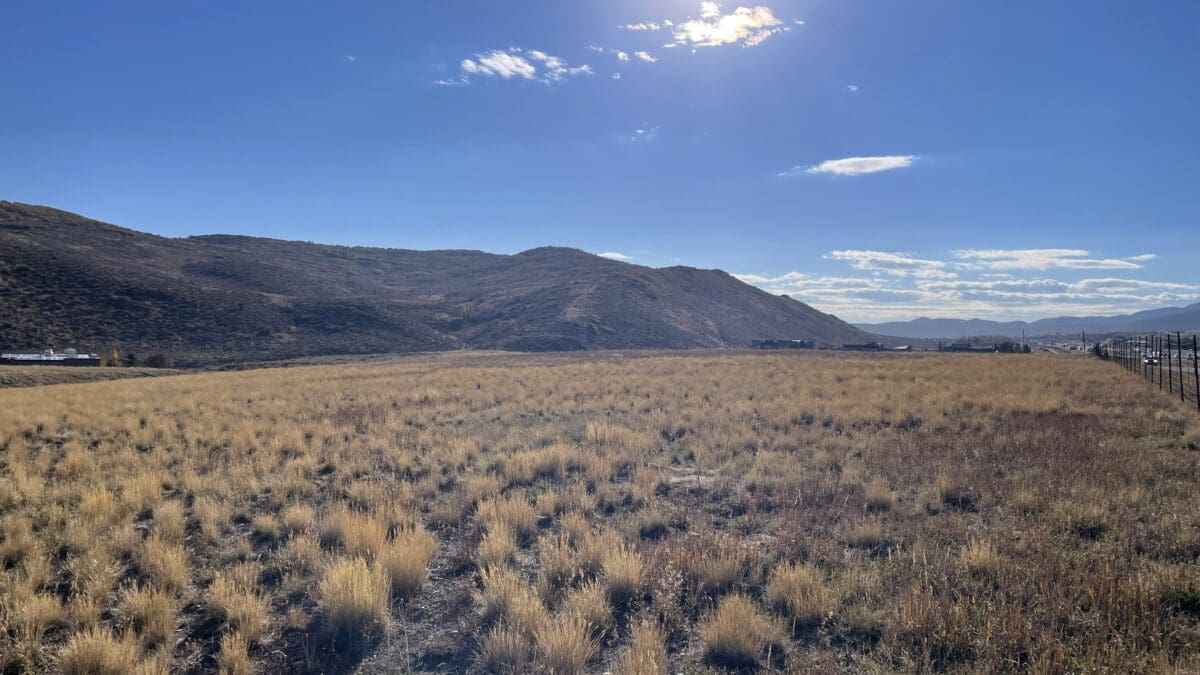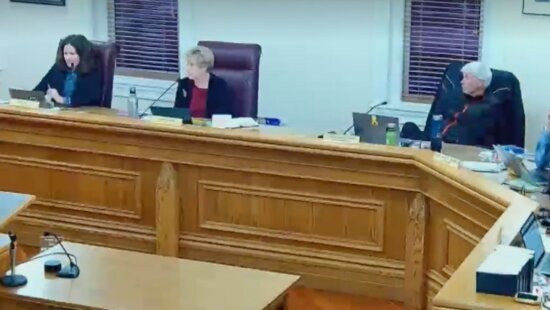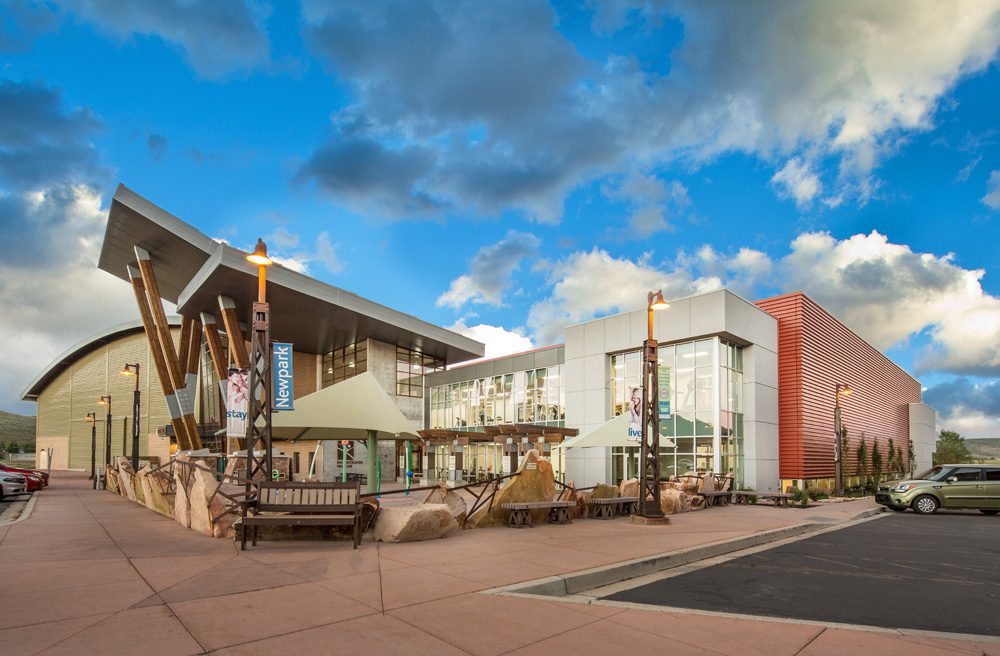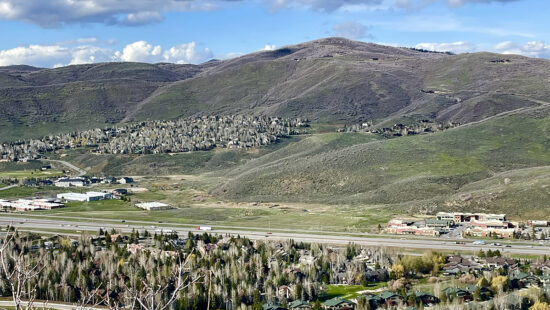Town & County
County Council remains unclear on future for Cline Dahle development

The land along Rasmussen Rd. in Jeremy Ranch that Summit County Council is eyeing for development. Photo: TownLift // Marina Knight
Recent discussions highlight County Council is split on project's affordable housing goals
SUMMIT COUNTY, Utah — Last week, the Summit County Council pushed back plans to issue a request for proposals to determine the future of a 17-acre piece of land along Rasmussen Road until they can form a better vision for the property.
An initial proposal for the Cline Dahle property was made public at a late September Summit County Council meeting. That plan included 210 residential units on 17 acres, a new fire station, improved park space, a small green space, and retail and office space. While the County Council has expressed general support for the concept, members emphasized the need for further discussions about the county’s affordable housing goals before finalizing the draft.
During the Oct. 23 meeting, Jeff Jones, economic development and housing director, outlined specific details about the proposal.
Proposed Housing Breakdown:
– 10%: Single-family detached housing
– 19%: Single-family attached housing
– 71%: Multi-family rental units
Deed-Restricted vs. Market Rate Units:
– Roughly half of the units would be deed-restricted
– The remaining units would be available at market rate
Affordability and Area Median Income (AMI) Distribution:
– Most units reserved for households earning 30%-60% of AMI (no more than $91,800 for a family of four)
– About 25% of units reserved for households in the 61%-80% and 81%-100% AMI ranges
– Fewer than 10% of units could be deed-restricted for the 101%-107% AMI range
– 6% reserved for households earning 121%-150% AMI
– 1% reserved for households earning under 30% AMI
In a late September meeting, Councilor Chris Robinson expressed reservations about the proposed number of units, suggesting that 210 might be insufficient. He advocated for condominiums instead of townhomes and questioned whether the county should sell the land, establish a ground lease, or form a public-private partnership. Councilors Roger Armstrong and Canice Harte said 210 units would be too many. Harte stressed the importance of supporting the idea of a fire district and encouraged planners to explore opportunities beyond housing to create a well-rounded community space. County Council chair Malena Stevens said she didn’t want to invest a lot of taxpayer money in the project.
The Cline Dahle property presents unique challenges, as East Canyon Creek runs through the site, limiting the developable land to about half of the original 30-acre parcel. Past discussions for the property have included options for a park-and-ride facility, transit opportunities, natural spaces, and community gathering areas.
Next steps: County officials plan to hold a work session to better outline the plan and its economic viability. Once a clearer idea of how to develop the Cline Dahle property is agreed on, it would need to be rezoned to a neighborhood mixed-use zone. The property is zoned rural residential (1 unit per 20 acres), but rezoning to community commercial or mixed-use could allow higher-density development. The new proposal deadline was set for Dec. 18.
Rewind to late August: At a meeting in late August, Councilor Armstrong opposed moving forward without a clear vision, arguing that rushing the project without detailed planning would be premature. There were also early issues with draft proposals. The Planning Department’s request for proposals (RFP) suggested mixed-use development but lacked specifics on units, rezoning, and housing goals, which raised concerns among officials.
Housing is the major sticking point among the council: Armstrong has also warned against reactive development, calling for a long-term plan to address housing needs without compromising community priorities. Councilor Canice Harte has emphasized the importance of balancing affordability and development, citing concerns about the area becoming a retirement enclave with few opportunities for younger families and workers. Economic director Jeff Jones noted the county must build 518 to 652 units annually over the next decade to meet housing demand.




















